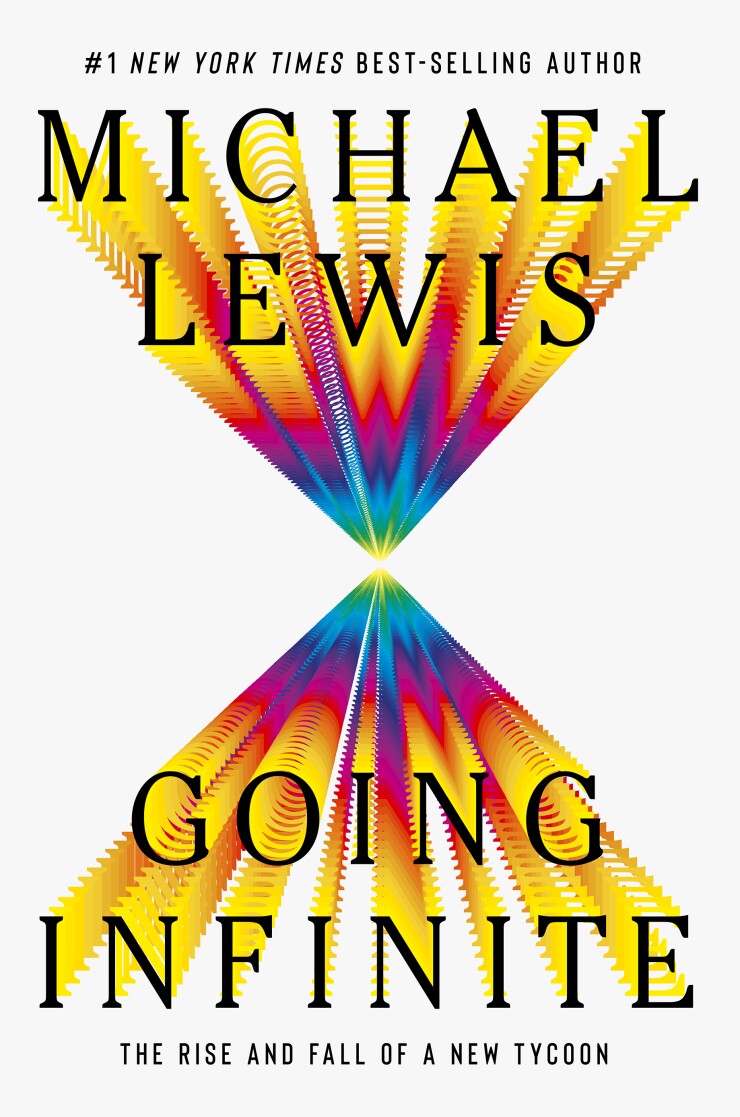When Sam Bankman-Fried, the former CEO of cryptocurrency exchange FTX, and his employee/sometimes-girlfriend Caroline Ellison decamped to separate living quarters in FTX's tropical compound on the heels of another breakup, hardly any colleagues living on the property noticed. That was because few people were aware of their romantic involvement in the first place.
"People never see what they're not looking for," Bankman-Fried told author Michael Lewis, whose newest book, "Going Infinite: The Rise and Fall of a New Tycoon," chronicles Bankman-Fried's path from high-frequency trader to billionaire CEO before his crypto empire collapsed in November 2022.
The same sentiment could describe how Bankman-Fried escaped deep scrutiny for years, despite allegedly shoveling billions of dollars belonging to FTX customers into his other firm, hedge fund Alameda Research. The crypto exchange founder was celebrated for his advocacy around government regulation and the massive charitable donations he made as an "effective altruist"; now he is facing decades of jail time after he was convicted earlier this month of various criminal charges related to fraud, conspiracy and money laundering.
Even if, like me, the topic of crypto normally makes your eyes glaze over, the salacious story behind the sudden fall of a 31-year-old once-billionaire has probably grabbed your interest.

Lewis' timing was fortuitous: He met with Bankman-Fried in late 2021 at the request of a friend, and ended up shadowing him through FTX's collapse. The last 50 pages of the book is a race through the company's unraveling, as a run on the exchange forced its bankruptcy; employees fled the Bahamas where the firm was headquartered; and top executives, including Ellison, turned on their former boss.
But unlike most observers, including those quoted in his book, Lewis is a little more sympathetic. He falls short of accusing Bankman-Fried of calculated fraud.
"Lord knows the very easy, lazy thing to do right now would be to throw Sam under every bus you could, and try to make him seem as bad as possible, because people respond to that," said Lewis in an interview with Time magazine. "But it just wouldn't be true. It's not the character I knew. It's not the situation I knew."
Putting aside Lewis' tepid reaction to the outrage surrounding Bankman-Fried, there is plenty of evidence in the book to draw your own conclusions — and clues to how he got away with his deception for so long.
Early on, Lewis notes that Bankman-Fried's "judgment of other people was always far more acute than their judgment of him." For instance, most people underestimated Gary Wang, a coding genius and classmate of Bankman-Fried's at MIT, because of his extreme social awkwardness and aversion to speaking. Bankman-Fried recruited him as the chief technology officer for Alameda Research and then FTX. (Wang has since pleaded guilty and testified against Bankman-Fried.) Bankman-Fried himself acknowledged to Lewis that he reads people "pretty well."
"They just didn't read me," he said.
Lewis collects juicy tidbits that suggest why so many people looked the other way. That includes a rundown of the obscene amounts of money Bankman-Fried threw at athletes and other celebrities to promote FTX, from $55 million to NFL quarterback Tom Brady to a mere $15.7 million for businessman Kevin O'Leary, who Lewis points out is "not even the most famous 'Shark Tank' person. Maybe not even the second-most famous 'Shark Tank' person."
Lewis traces the many causes and people to which Bankman-Fried donated or considered directing money, from a $10 billion pandemic response initiative to the idea (never executed) of bribing Donald Trump to not run for president. Attorney John Ray, who took over FTX after its failure, theorizes that the hundreds of private investments made by Alameda Research were a way to buy friends. "For the first time in his life, everyone ignores the fact that he's a f---ing weirdo," Ray told Lewis.
Lewis digs into the infighting and hypocrisy among Bankman-Fried's gaggle of effective altruists, many of whom turn on him in the early days of Alameda Research. "You might surmise that they wouldn't much care who wound up with the money, as it all would go to saving the lives of the same people none of them would ever meet," writes Lewis. "You would be wrong: in their financial dealings with each other, the effective altruists were more ruthless than Russian oligarchs."
The studies of people in Bankman-Fried's orbit are also intriguing. Bankman-Fried and Ellison, his on-off girlfriend whom he installed as CEO of Alameda Research, hashed out their conflicting feelings about each other in memos, some of which are reprinted in all their glory. That includes a pro-con list as Bankman-Fried weighs the merits of a relationship with her. ("Arguments against: In a lot of ways I don't really have a soul.")
We also learn about the people who made less news, including company psychiatrist George Lerner, whom Bankman-Fried liked because Lerner "took him as he was — and actually didn't seem all that interested in engaging in pointless conversations about his feelings." Chief Product Officer Ramnik Arora took an 80% pay cut to what he had been making at Facebook and improvised a role for himself as Bankman-Fried's handyman. "The funny thing about Ramnik Arora was that all he'd really been looking for was a chance to walk to work," wrote Lewis. Natalie Tien, who as head of public relations for FTX helped Bankman-Fried's celebrity take off, is one of the more human faces of the debacle, as is Constance Wang, the exchange's chief operating officer who sticks around the Bahamas compound after most others have escaped to try probing Bankman-Fried into a confession.
The confession never comes in so many words. Nevertheless, a few offhand remarks Bankman-Fried makes to Lewis and others say enough when you read between the lines.
"I said to Sam, 'You have to explain why you moved the funds.' And he never denied that," Wang told Lewis.






